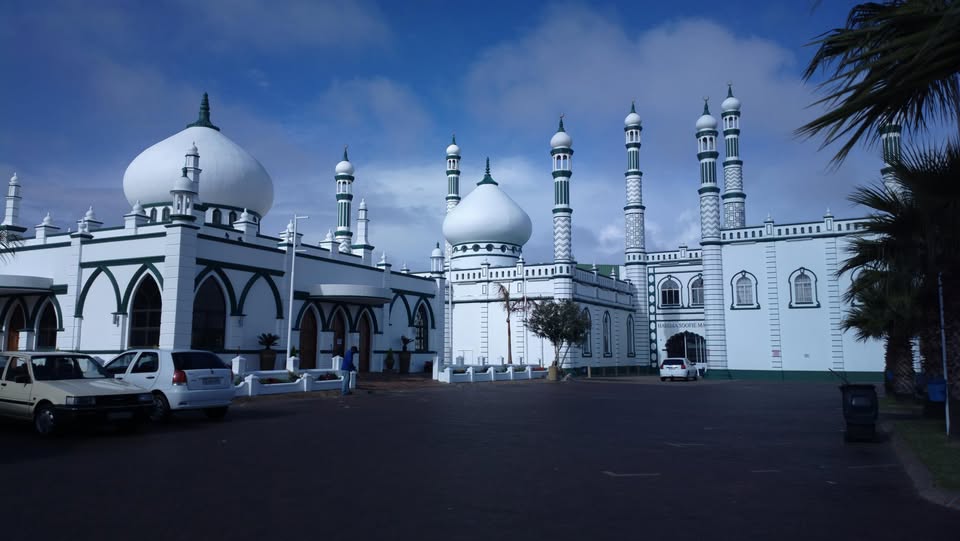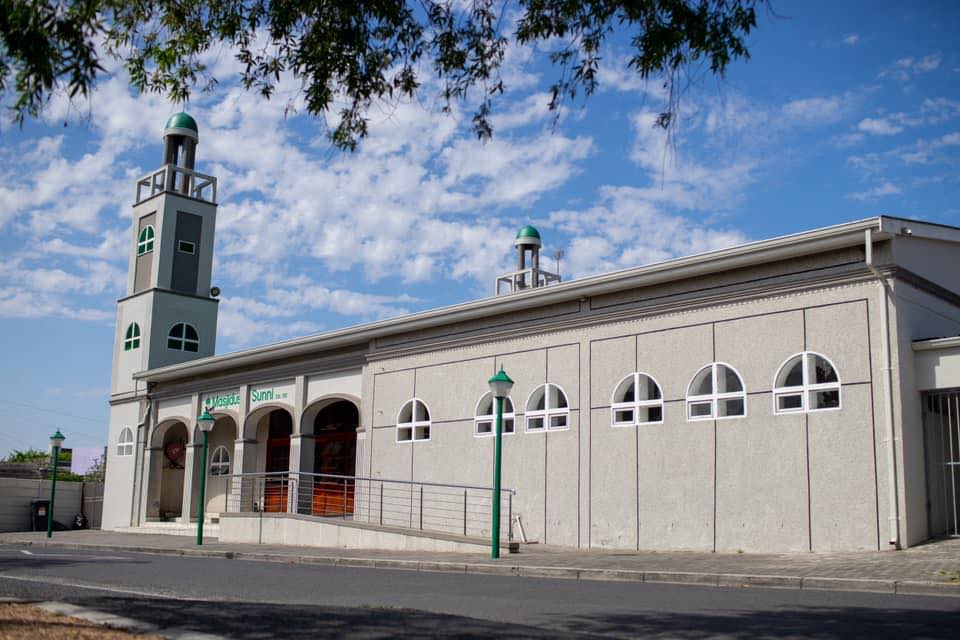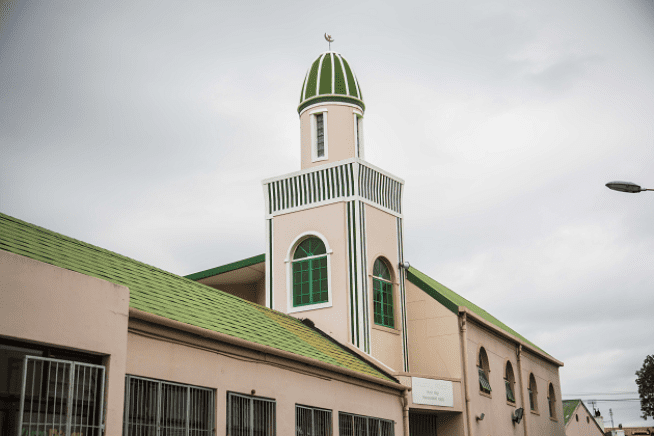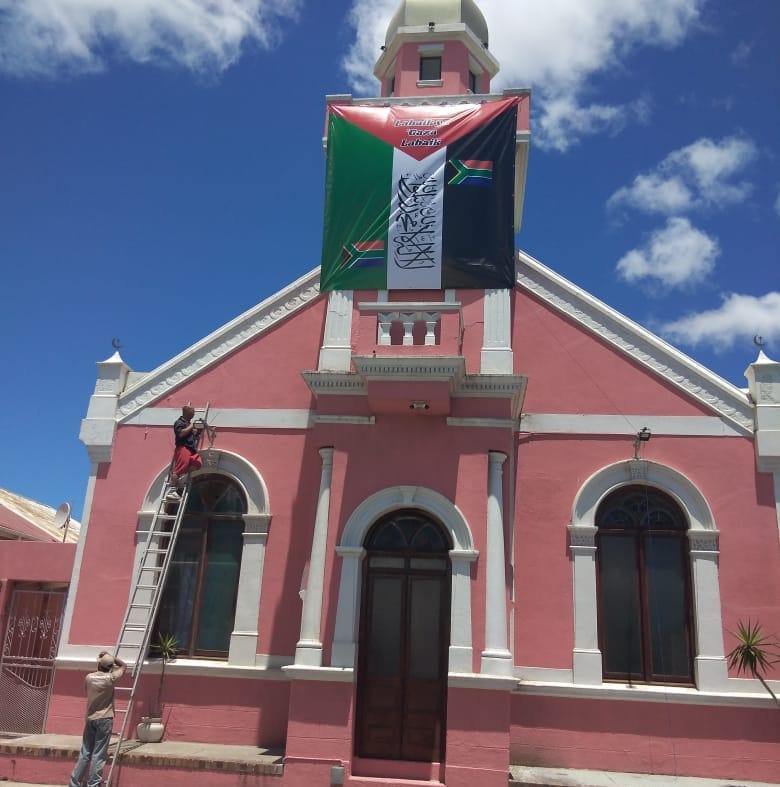
Qibla Finder
Accurate Prayer Direction
Made Simple
To discover the qibla direction for your prayers, anytime, anywhere. Turn on your location settings.
HOW IT WORKS
Qibla Finder uses a combination of your device’s GPS, compass, and advanced algorithms to accurately determine the direction of the Qibla. Our state-of-the-art technology accounts for your location, altitude, and the Earth’s curvature to provide a precise Qibla direction, so you can focus on your prayers with complete peace of mind.
Welcome to Qibla Finder, your ultimate solution to finding the Qibla direction with ease and precision. Our advanced app uses cutting-edge technology to provide you with accurate prayer direction, ensuring your prayers are always aligned with the Kaaba in Mecca. No matter where you are in the world, Qibla Finder has got you covered.
INSTRUCTIONS FOR USING QIBLA FINDER
- Navigate to Qibla Finder
- Grant the necessary permissions for GPS and compass access.
- Place your phone on a flat surface or hold it steadily in your hand.
- The app will automatically detect your location and show the Qibla direction with an easy-to-follow line.
- You are now facing the Qibla.
FEATURES
- Instant Qibla direction based on your current location
- Highly accurate, using advanced algorithms and compass technology
- Compatible with both Android and iOS devices
- Easy-to-use, with a clean and intuitive interface
- Regular updates and improvements to maintain accuracy
Nearest Masjid
Why Should we Find the qibla?
Finding the Qibla, the direction Muslims face during prayer, is a fundamental aspect of Islamic worship. It is a prerequisite to perform the obligatory salah. The Qibla points towards the Kaaba, a sacred structure located in the holy city of Mecca, Saudi Arabia. The Kaaba is considered the “House of God” and holds immense significance in Islam. Muslims around the world, regardless of where they are, must orient themselves towards the Qibla during the five daily prayers (Salah). This shared direction symbolizes unity and uniformity in worship, connecting Muslims globally in their devotion.
Historically, to find the Qibla required a deep understanding of geography and astronomy. Early Muslims relied on landmarks, the position of the sun, stars, and other natural indicators to approximate the direction of Mecca. As Islamic civilization advanced, scholars developed mathematical methods and instruments like the astrolabe to enhance accuracy. The construction of mosques also reflected this importance, with architects ensuring that the prayer hall was aligned precisely with the Qibla. In regions where the exact direction was challenging to determine, local traditions and consensus often guided the community’s orientation.
In the modern era, to find the Qibla has become significantly easier with the advent of technology. Smartphones, GPS devices, and dedicated Qibla-finding apps provide instant, precise directions to Mecca from any location on Earth. These tools often incorporate compass functionalities, satellite data, and even augmented reality to guide users accurately. For those traveling or living in non-Muslim-majority countries, such technologies have been particularly valuable, enabling them to maintain their religious practices regardless of their surroundings.
Despite the technological advancements, the spiritual essence of facing the Qibla remains profound. It is not merely a physical act but an act of Ubudiyyah (Servanthood) of unity among the Muslim ummah (community). Facing the Qibla during prayer reinforces a sense of belonging and connection to the global Islamic community. It serves as a reminder of the shared beliefs, values, and history that bind Muslims together, transcending geographical and cultural differences.
What is the Qibla in Islam?

Muslims around the world perform Salah (prayer) facing the Kaaba at Makkah. This direction is known as the “qibla” in Islam. Before performing a prayer, it is common for Muslims to ask each other where the Qibla is.
How did the qibla become a thing? When did Muslims start facing the Kaaba when praying? What was the ruling on the qibla? In this article, we will examine all of this in more detail. Continue reading.
The Kaaba
The Kaaba is a cube shaped building, covered in the black kiswah with a gold band located in the courtyard of the mosque known as Masjid Al Haram, in the city of Makkah, Saudi Arabia. It is important to note that Muslims do not worship the Kaaba. Rather, we use the Kaaba as a focal point of direction while praying, in order to maintain unity amongst Muslims worldwide.
Was the Qibla always the Kaaba?
The first Muslims prayed towards the Al Aqsa Mosque in Jerusalem. Around sixteen months after Prophet Muhammad (pbuh) and his followers migrated from Makkah to the city of Madinah, the qibla was changed to the Kaaba. [al-Bukhaari and Muslim]
During the noon prayer, Prophet Muhammad, may the mercy and blessings of God be upon him, received a revelation from Allah instructing him to:
“Turn your face towards Masjid Al Haram”.
Allah says,
“Thus, we have made you real believers in Islamic Monotheism, true followers of Prophet Muhammad and his legal ways, a just nation, witnesses over mankind and the Messenger a witness over you. And We made the Qibla (prayer direction towards Jerusalem) which you used to face, only to test those who followed the Messenger from those who would turn on their heels (i.e. disobey the Messenger). Indeed, it was great (heavy) except for those whom God guided. And God would never make your prayers to be lost (i.e. your prayers offered towards Jerusalem). Truly, God is full of kindness, the Most Merciful towards humankind.”
“Verily! We have seen the turning of your (Muhammad) face towards the Heaven. Surely, We shall turn you to a Qibla (prayer direction) that shall please you, so turn your face in the direction of Al-Masjid- al-Haram (at Mecca). And wheresoever you people are, turn your faces (in prayer) in that direction…} (Quran 2:143-144)
Why the change in direction?
When we study the seerah, we imagine the change in qibla to be like any other aspect of what happened in the Prophet’s time. But, the change in qibla was one of the biggest tests for the Muslim Ummah.
Imagine facing one direction and then suddenly being asked to change the direction of prayer? It was a huge test to see how serious the early Muslims were, in following the commandments of Allah and His Messenger (pbuh).
Allah says,
“We decreed your former qiblah only in order that We might know the Prophet’s true adherents and those who were to disown him. It was indeed a hard test, but not for those whom Allah guided.” (Surah al-Baqarah, 2:143)
DID YOU KNOW?
There are two kaabas!
There is an exact replica of a Kaaba in heaven, right above the Kaaba in Makkah.
The Messenger of Allah (pbuh) said narrating about the journey of ‘Isra wal Miraaj,
“Then I was shown Al-Bait-al-Ma’mur (i.e. Allah’s House). I asked Jibreel about it and he said, This is Al Bait-ul-Ma’mur where 70,000 angels perform prayers daily and when they leave they never return to it (but always a fresh batch comes into it daily).”
The qibla is not just a mere piece of direction the Muslims turn towards. Rather, it is a sign of Muslim unity and brotherhood that makes every single believer from the East to the West, from the rich to the poor, the young to the old, turn towards one direction, to worship One Supreme Lord, seeking His forgiveness, mercy and guidance.
Why do we need
the Qibla in Islam?
Muslims use the Qibla as a focal point for their prayers to maintain unity and consistency in their worship. The Qibla is the direction towards the Kaaba, a cuboid structure located in Mecca, Saudi Arabia, which holds great religious significance in Islam.
Facing the Qibla during prayers (Salah) is a requirement for Muslims, as it symbolizes their submission to Allah and helps create a sense of unity among the global Muslim community. This practice of facing the Qibla is based on Islamic teachings, specifically a verse from the Quran (2:144), which instructs Muslims to turn their faces in the direction of the Sacred Mosque (Masjid al-Haram) in Mecca while praying.
Allah legislated prayer and made it the first pillar of Islam, second only to the two testimonies of faith. The Prophet PBUH said,
“Islam is built upon five [pillars]: testifying that there is no god save Allah and that Mohammed is the messenger of Allah, performing prayers, paying zakat, making the pilgrimage to the House, and fasting Ramadan [Bukhari and Muslim].
Allah the Almighty says,
And be steadfast in prayer: Give zakat, and bow down your heads with those who bow down (in worship). [Al-Baqarah: 43]
Allah made facing Al-Masjid Al-Haram among the conditions for the validity of prayers. Based on this, the prescribed prayer of a resident who offers it in safety is valid only if he faces the proper direction due to the words of Allah Who says,
“So turn your face toward Al-Masjid al-Haram. And wherever you [believers] are, turn your faces toward it [in prayer].” [Al-Baqarah: 144]
“So from wherever you go out [for prayer, O Muhammad] turn your face toward Al- Masjid al-Haram.” [Al-Baqarah: 149]
Exceptions
The only exceptions to praying towards the qibla are:
- When a person is engaged in war against disbelievers (the Prayer of Peril)
- When offering a supererogatory prayer on board means of transport.


